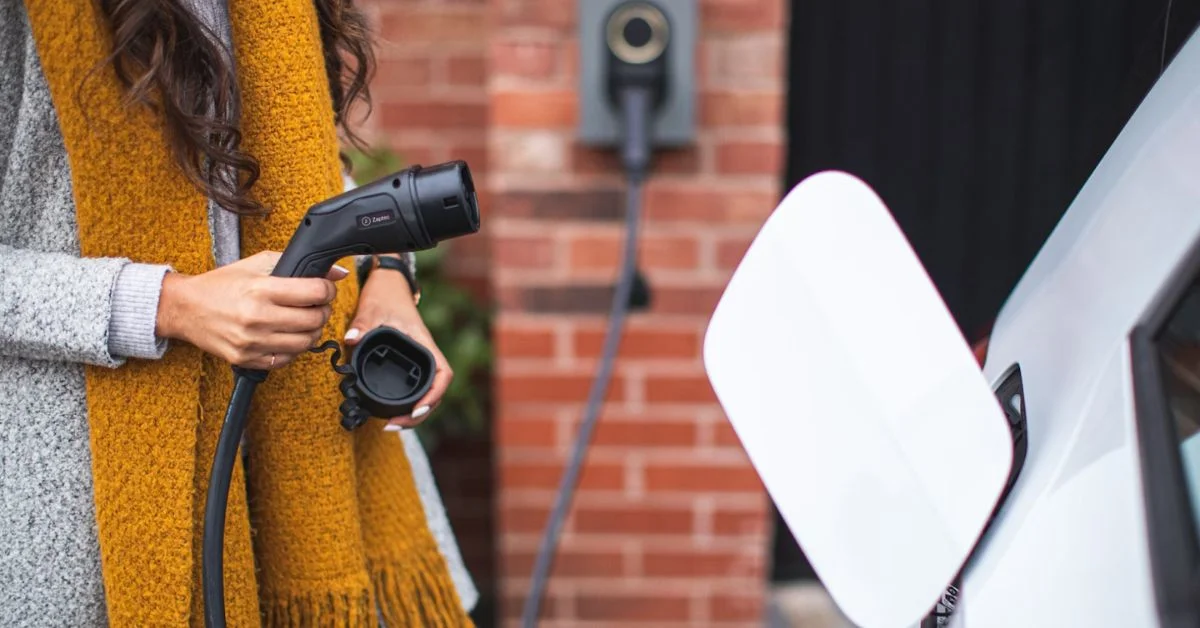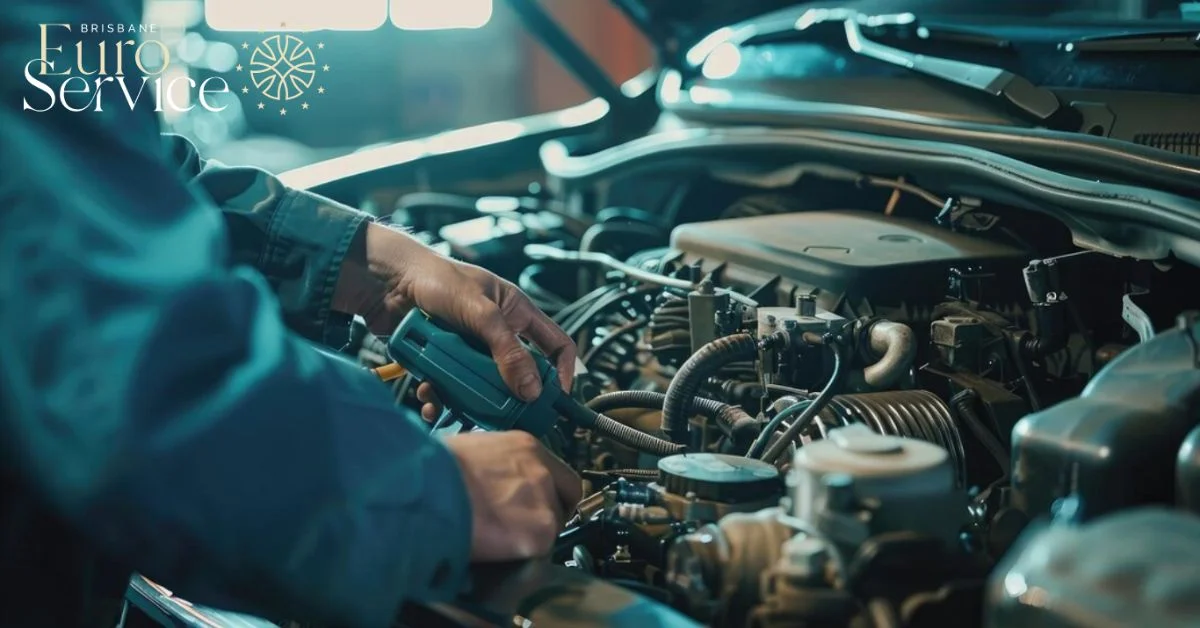AUTOMOTIVE
A Comprehensive Guide for Used Car Buyers and How to Sell Your Car Successfully

In today’s world, the automotive industry has become more dynamic and accessible, especially when it comes to the used car market. Whether you are a first-time buyer looking for a reliable vehicle or someone who is planning to sell their car, understanding the ins and outs of the used car market can make a significant difference. This article aims to provide a detailed guide on both aspects: what used cars buyers should look for and how to successfully sell your car, ensuring you get the best deal possible.
Section 1: The Ultimate Guide for Used Car Buyers
Purchasing a used car is an excellent way to get a good vehicle at a lower price, but it can also be a daunting experience if you don’t know what to look for. Here’s a detailed breakdown of steps and tips that used car buyers should follow to make an informed decision.
1. Research Extensively
Before diving into the market, used car buyers must conduct thorough research. Today’s online platforms make it easier than ever to compare different models, read customer reviews, and find out about market prices. Some key considerations include:
- Vehicle Make and Model: Different cars are known for different qualities. For example, Toyota and Honda are often praised for their reliability, while brands like BMW and Mercedes are favored for luxury. Researching the pros and cons of various makes and models will help narrow down your options.
- Price Range: Establish a clear budget before looking at cars. This prevents you from being tempted to overspend on a flashy vehicle.
- Fuel Efficiency: With rising fuel costs, gas mileage is an important factor to consider. Cars with better fuel efficiency will save you money in the long run.
- Safety Ratings: Always check the safety ratings of the cars you are considering. Institutions like the National Highway Traffic Safety Administration (NHTSA) and the Insurance Institute for Highway Safety (IIHS) provide valuable safety information.
2. Check the Vehicle History
Once you’ve identified potential cars, the next critical step is checking their history. Services like Carfax and AutoCheck provide detailed vehicle history reports that include:
- Accident History: Any car that has been in a significant accident may have underlying issues, even if the damage was repaired.
- Previous Ownership: The fewer owners a car has had, the better. Multiple owners in a short span can be a red flag.
- Mileage Verification: Be wary of cars with unusually low mileage for their age, as this could indicate odometer tampering.
- Service Records: A well-maintained car with regular servicing is always preferable.
3. Inspect the Car Thoroughly
A visual inspection can reveal a lot about the condition of the car. If you’re not an expert in car mechanics, consider hiring a professional mechanic to help. Some things to inspect include:
- Exterior: Look for any signs of rust, dents, or mismatched paint, which may indicate previous accidents.
- Interior: Check for any wear and tear on seats, pedals, and other interior components. A well-maintained interior is a good sign.
- Tires: Inspect the tires for wear. Uneven wear can indicate problems with the suspension or alignment.
- Under the Hood: Look for any signs of oil leaks, corrosion, or frayed wires.
4. Test Drive the Vehicle
The test drive is one of the most crucial steps for used car buyers. It’s your opportunity to see how the car performs in real-world conditions. Here’s what to focus on:
- Braking: The brakes should feel firm, not spongy. Listen for any unusual noises when braking.
- Acceleration: The car should accelerate smoothly and respond well when you press the gas pedal.
- Steering and Suspension: The car should steer straight, and the suspension should handle bumps smoothly.
- Transmission: If you’re buying an automatic car, the shifts between gears should be smooth and seamless. For manual transmissions, make sure the clutch feels responsive.
5. Negotiation and Finalizing the Deal
Negotiation is an essential part of buying a used car. Never accept the first price offered, as there’s often room for negotiation. Some key tips include:
- Leverage Information: Use the vehicle history report and any issues found during inspection to negotiate a lower price.
- Don’t Be Afraid to Walk Away: If the seller isn’t willing to negotiate, it’s okay to walk away. There are always other cars on the market.
- Finalize the Paperwork: Make sure all paperwork, including the bill of sale, title transfer, and any financing agreements, are in order before finalizing the deal.
Section 2: How to Sell Your Car: A Step-by-Step Guide
If you’re on the other side of the table and want to sell your car, the process can seem overwhelming at first. However, with proper planning and preparation, you can sell your car quickly and get the best value for it. Here’s how to go about it.
1. Determine Your Car’s Value
The first step in selling your car is determining its market value. There are several resources you can use for this:
- Kelley Blue Book (KBB): KBB is one of the most trusted platforms for car valuations. Input your car’s make, model, year, and condition, and it will provide a range of values.
- Edmunds: Another reputable site, Edmunds, also offers car valuation tools to help you get a sense of your car’s worth.
- Comparative Analysis: Browse local listings for similar cars to see what price range they are being sold in. This will give you a better understanding of the market.
2. Prepare Your Car for Sale
Before listing your car for sale, it’s important to get it into the best condition possible. This not only increases the chances of a quick sale but can also boost its resale value.
- Clean the Car: A thorough cleaning, both inside and out, is essential. Consider professional detailing if your car is in need of a deeper clean.
- Make Minor Repairs: If there are any small issues like burnt-out lights or minor scratches, it’s worth fixing them before listing the car. Small fixes can lead to a higher selling price.
- Gather Maintenance Records: If you’ve kept records of your car’s maintenance history, gather them in one place. Buyers often appreciate having detailed records.
3. Advertise Your Car
When it comes to selling your car, advertising is key. You want to reach as many potential buyers as possible. Here are some effective ways to advertise:
- Online Listings: Websites like Craigslist, Facebook Marketplace, and Autotrader are excellent platforms for selling cars. Make sure your listing is detailed and includes high-quality photos.
- Social Media: Use your personal social media accounts to let friends and family know you’re selling your car. Word-of-mouth can be surprisingly effective.
- Local Newspapers: If you want to reach a local audience, consider placing an ad in your local newspaper or community bulletin.
4. Craft an Effective Ad
An effective ad can significantly increase the chances of selling your car quickly. Make sure to include the following information:
- Detailed Description: Include the make, model, year, mileage, and any notable features of the car. Be honest about the car’s condition, mentioning any flaws.
- High-Quality Photos: A picture is worth a thousand words. Take clear, well-lit photos from multiple angles, including the exterior, interior, and under the hood.
- Asking Price: Make sure your asking price is competitive, based on the research you conducted earlier. Be open to negotiation, but also set a minimum price you’re willing to accept.
5. Screen Potential Buyers
When selling a car, you may encounter various types of buyers, some serious and others just browsing. It’s important to screen potential buyers to avoid wasting time or falling victim to scams.
- Serious Inquiries Only: Make it clear in your ad that you’re looking for serious inquiries only. This can help weed out time-wasters.
- Be Wary of Scammers: Be cautious of buyers who offer to pay more than the asking price, or who insist on using wire transfers or other suspicious payment methods.
- Set Up a Test Drive: If a potential buyer wants to test drive the car, ensure you meet in a public place and accompany them during the drive.
6. Negotiate and Close the Deal
Once you’ve found a buyer, it’s time to negotiate. Some tips to ensure a smooth negotiation include:
- Be Willing to Compromise: While you should aim to get a good price, being too rigid may cause the buyer to walk away.
- Handle Payment Safely: Cash is the safest option, but if the buyer wants to pay by check, make sure the check clears before handing over the car.
- Complete the Paperwork: Ensure the title is properly transferred to the new owner and that you complete any necessary state-specific paperwork, like a bill of sale or release of liability form.
Conclusion
Whether you are a used car buyer or someone looking to sell my car, preparation is key. As a buyer, researching extensively, inspecting the vehicle thoroughly, and negotiating effectively will ensure you get a good deal. For those selling, preparing your car, advertising it well, and screening potential buyers can help you sell quickly and at a good price. By following the tips outlined in this guide, both buyers and sellers can navigate the used car market with confidence.
AUTOMOTIVE
Plugging Into the Future: How Car Charging Stations Are Accelerating the Shift to Electric Mobility

As the electric mobility shift is increasing with a speed never seen before, the car charging stations are becoming a key part of the transition process.At the forefront of this movement are the electric vehicle charger manufacturers. This article addresses the fact that car charging stations are determining the future of mobility, and that the electric vehicle charger manufacturers are the central players in this revolution.
Energizing the Shift
Electric vehicle charger manufacturers are the driving force behind the seismic shift to electric mobility. They are driven by innovation, quality, and sustainability that can be seen in the high-end charging solutions they provide.These manufacturers are not just creating products; they are creating the infrastructure for a cleaner, greener future.
Innovation and Accessibility
Car charging station manufacturers are at the nexus of innovation and accessibility, bringing cutting-edge technology to the masses. They are the ones who play a key role in making the charging stations not only tech-savvy but also widely available.By expanding the network of charging stations, these manufacturers are effectively removing one of the biggest barriers to EV adoption – range anxiety, and making electric mobility a viable option for everyone.
The Technological Leap
The technological leap in car charging stations, spearheaded by electric vehicle charger manufacturers, is nothing short of revolutionary. Smart, networked systems with rapid charging technologies that integrate seamlessly with the grid are the ones that are now setting the new standards in the industry.Their innovations are not just enhancing the performance and efficiency of charging stations but are also elevating the overall user experience, making it more convenient and user-friendly.
Powering Sustainability
Electric vehicle charger makers do not only charge vehicles but also charge the whole sustainable future.Their dedication to leveraging renewable energy sources and minimizing the environmental impact of their products is commendable. Through the implementation of sustainability in all its business activities, manufacturers of electric vehicles are making sure that the shift from traditional fuel-based vehicles to electric vehicles is about decreasing emissions and achieving sustainability in general.
Future Trends
The road ahead for electric vehicle charger manufacturers is filled with opportunities and challenges. The increasingly evolving trends such as wireless charging, advanced AI-powered energy management and combination of charging stations with smart city infrastructure are determining the future of this sector.These manufacturers are not just adapting to these trends; they are at the forefront, driving innovation and setting the course for the future of electric mobility.
To sum up, charging the car stations are not just the commodity of the EV ecosystem; they are the catalysts of change, and they are leading the world towards the future of sustainable, efficient, and accessible electric mobility. The electric mobility process is a community one and the manufacturers are the ones who lead it towards the transformation of the world.
AUTOMOTIVE
Things Every Car Owner Should Know

A car is a complex machine, and caring for it effectively requires a little bit of study and research. This needn’t imply a great deal of effort, however – just a few minutes spent committing a few critical details to memory can make an enormous difference.
Knowing what car you’re driving
You should know not only the make and model of your vehicle, but the year it was manufactured. Learning the registration number by heart can be tricky – but if you recite it every morning for a week, you can be fairly sure you’ll never forget it.
It’s also worth learning your insurance details. You never know when you’ll be called on to recall them. You might write key details down and stow them in the glove compartment. You’ll want to know the extent and type of your coverage. Contract hire gap insurance provides a very different level of cover in certain situations, for example.
How to check tyre pressure
If you can’t inflate your tyres, then you’ll ultimately suffer from poor fuel economy, and an inferior driving experience. You can either inflate your tyres at your local petrol station, or do it at home. Learn what your tyre pressure should be, and inflate often enough that you don’t forget. Bear in mind that different pressures are appropriate, depending on how laden the vehicle is.
Dashboard lights
A whole range of lights might pop up on your dashboard. The good news is that these lights are often self-explanatory, and universal; once you’ve learned them in one vehicle, you’ll know what’s going to happen in another. If the check engine light comes on, it’s time to visit a mechanic and get the engine checked.
Fuelling the car
You won’t be able to drive a car for very long if you don’t know how to fill it up. It’s worth figuring this out before you arrive at the filling station. Make sure you know where the petrol cap release is, if you have one inside the car. You should also know how to change coolant, oil and wiper fluid.
If you’re driving a hybrid or battery-electric vehicle, you’ll also need to know how you’re going to charge it. It’s also worth researching the charging options near you. If you’re planning on visiting a different part of the country, you’ll also need to know where the charging stations are – assuming that those charging stations aren’t out of action.
Getting a feel for the car
Often, the early warning signs of a problem with the vehicle can be subtle. For this reason, it’s critical that you understand what the car is supposed to feel like when everything is working properly. Pay attention to the steering and the brakes. The more experience you have in the vehicle, the more attuned you’ll become to its behaviour!
AUTOMOTIVE
The Importance of Engine Diagnostic: A Comprehensive Guide to Understanding and Troubleshooting Engine Issues – Brisbane Euro Service

Introduction to Engine Diagnostics
As a car owner, it’s important to understand the significance of engine diagnostics and how they can help maintain the health of your vehicle. An engine diagnostic is a comprehensive service that involves using advanced technology to assess the performance and condition of your engine.
By analysing the data obtained through the diagnostic process, mechanics can identify any underlying issues or potential problems that may be affecting the performance of your vehicle. This guide aims to provide you with a comprehensive understanding of engine diagnostics, why it is important, and how it can help you troubleshoot engine issues effectively.
What is an engine diagnostic service?
An engine diagnostic service involves the use of specialised tools and equipment to connect to your vehicle’s onboard computer system. This allows mechanics to retrieve valuable information about your engine’s performance, including error codes, sensor readings, and other critical data. This service is typically performed by trained professionals who have access to the necessary diagnostic tools and software.
Why are engine diagnostics important?
Engine diagnostics play a crucial role in identifying potential problems with your vehicle’s engine. By detecting issues early on, you can save yourself from costly repairs down the line. Engine diagnostics also help improve the overall performance and fuel efficiency of your vehicle. By addressing any underlying problems promptly, you can ensure that your engine operates optimally, reducing the risk of breakdowns and extending the lifespan of your vehicle.
Signs that Your Vehicle May Need an Engine Diagnostic
There are several signs that indicate your vehicle may require an engine diagnostic. If you notice any of the following symptoms, it is advisable to have your engine checked by a professional:
- Check Engine Light: If the check engine light on your dashboard is illuminated, it is a clear indication that there is an issue with your engine.
- Poor Performance: If your vehicle is experiencing a decrease in power, acceleration, or overall performance, it may be due to an underlying engine problem.
- Strange Noises: Unusual noises such as knocking, rattling, or squealing could be a sign of engine trouble.
- Increased Fuel Consumption: If you notice that your vehicle is consuming more fuel than usual, it could be indicative of an engine issue.
- Smell of Burning: A strong smell of burning oil or rubber could signify a serious engine problem that requires immediate attention.
How does an engine diagnostic work?
During an engine diagnostic, a mechanic will connect a diagnostic tool to your vehicle’s onboard computer system, which is commonly known as the OBD-II (On-Board Diagnostics) system. This tool retrieves valuable information such as error codes, sensor readings, and other data that can help identify any issues with your engine. The mechanic will then interpret this data to diagnose the problem accurately.
Common Engine Issues Identified Through Diagnostics
Engine diagnostics can help identify a wide range of engine issues. Some common problems that can be identified through diagnostics include:
- Malfunctioning Oxygen Sensor: A faulty oxygen sensor can lead to decreased fuel efficiency and increased emissions.
- Ignition System Problems: Issues with the ignition system, such as a malfunctioning spark plug or ignition coil, can cause misfires and reduced engine performance.
- Fuel System Issues: Problems with the fuel injectors, fuel pump, or fuel filter can lead to poor fuel efficiency and engine misfires.
- Emission Control System Malfunctions: Engine diagnostics can help pinpoint problems with the emission control system, ensuring compliance with environmental regulations.
Troubleshooting Engine Problems with Diagnostic Tools
Once an issue has been identified through engine diagnostics, mechanics can use specialised diagnostic tools to troubleshoot and fix the problem. These tools allow them to access specific components of the engine and perform tests to determine the root cause of the issue. By using these tools, mechanics can efficiently diagnose and repair engine problems, saving you time and money.
The Benefits of Regular Engine Diagnostics
Regular engine diagnostics offer a range of benefits, including:
- Early Problem Detection: By conducting regular engine diagnostics, potential issues can be identified and resolved early on, preventing more significant problems from developing.
- Improved Performance: Addressing engine issues promptly can help improve the overall performance and fuel efficiency of your vehicle.
- Cost Savings: By detecting problems early and addressing them promptly, you can save yourself from expensive repairs that may arise from neglected issues.
- Peace of Mind: Knowing that your vehicle’s engine is in good condition can provide you with peace of mind and confidence in your vehicle’s reliability.
Finding a reliable engine Diagnostic Service Near You
When searching for an engine diagnostic service near you, it is crucial to find a reliable and reputable provider. Look for a service centre that has experienced and trained technicians who specialise in engine diagnostics. Reading reviews and asking for recommendations from friends or family can also help you find a trusted service provider.
Brisbane Euro Service: Your Trusted Engine Diagnostic Specialist
If you’re located in Brisbane and in need of professional engine diagnostics, Brisbane Euro Service is your trusted specialist. With a team of skilled technicians and state-of-the-art diagnostic equipment, they can accurately diagnose and troubleshoot engine problems for all European car makes and models. Their commitment to customer satisfaction and expertise in engine diagnostics make them the go-to service centre for all your engine diagnostic needs.
Conclusion
Engine diagnostics are an essential tool for maintaining the health and performance of your vehicle’s engine. By regularly conducting engine diagnostics, you can detect and address potential issues early on, saving yourself from costly repairs and ensuring optimal performance. If you notice any signs of engine trouble, it is recommended that you seek the expertise of a reliable engine diagnostic service provider.
Brisbane Euro Service is a trusted specialist in engine diagnostics, offering top-notch service and expertise to keep your European car running smoothly. Don’t neglect the importance of engine diagnostics; it’s a small investment that can save you from bigger problems in the future.

 TECHNOLOGY4 months ago
TECHNOLOGY4 months agoBlog Arcy Art: Where Architecture Meets Art

 ENTERTAINMENT2 weeks ago
ENTERTAINMENT2 weeks agoExploring the Kristen Archives: A Treasure Trove of Erotica and More

 LIFESTYLE4 months ago
LIFESTYLE4 months agoThe Disciplinary Wives Club: Spanking for Love, Not Punishment

 LIFESTYLE2 weeks ago
LIFESTYLE2 weeks agoWho Is Sandra Orlow?

 GENERAL3 days ago
GENERAL3 days ago5 Factors That Affect Tattoo Removal Success

 ENTERTAINMENT8 months ago
ENTERTAINMENT8 months agoYuppow: Your Free Source for Movies and TV Shows

 ENTERTAINMENT1 week ago
ENTERTAINMENT1 week agoKiss KH: The Streaming Platform Redefining Digital Engagement and Cultural Currents

 HOME IMPROVEMENT5 days ago
HOME IMPROVEMENT5 days agoGet Your Grout to Gleam With These Easy-To-Follow Tips












